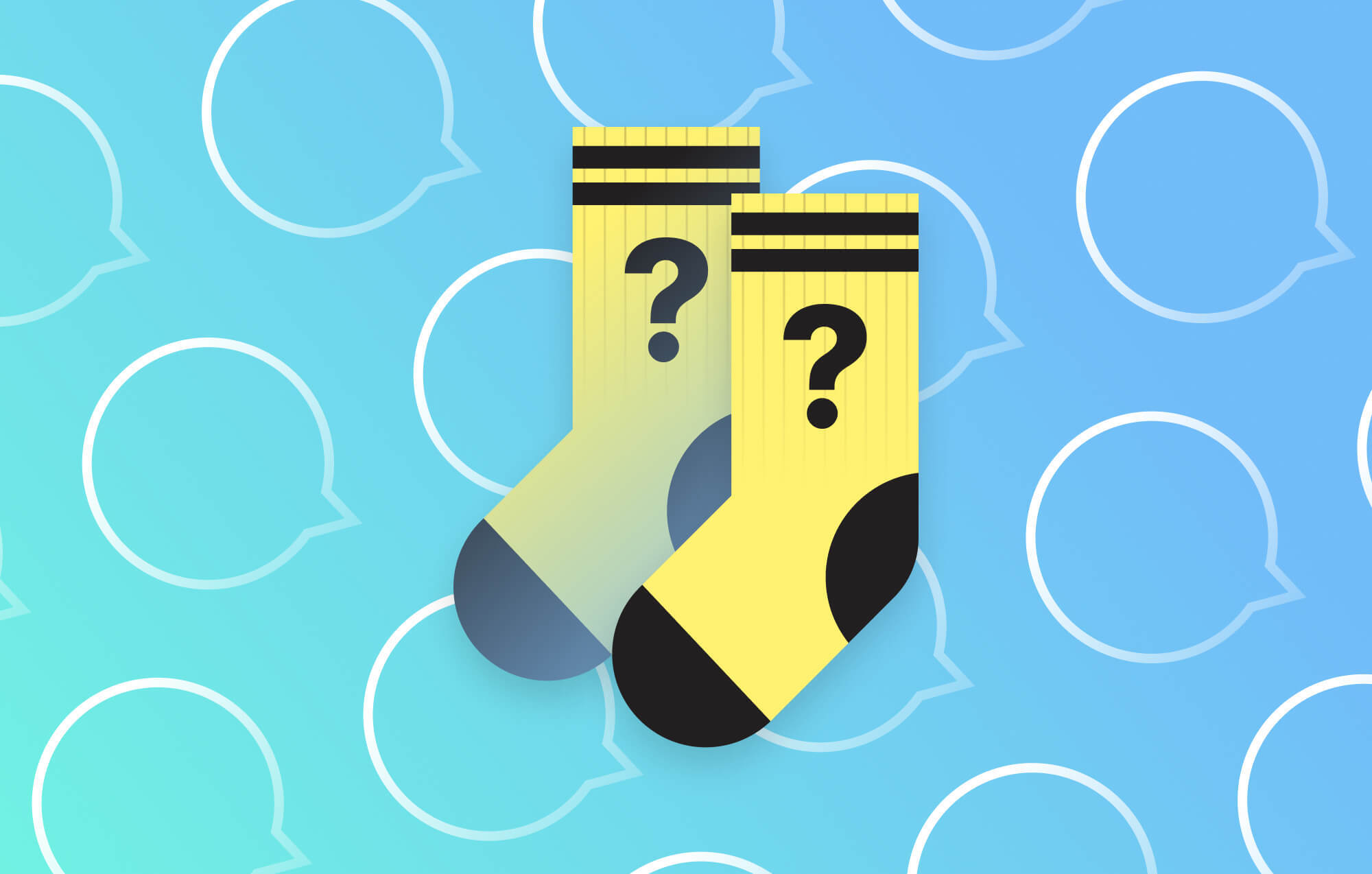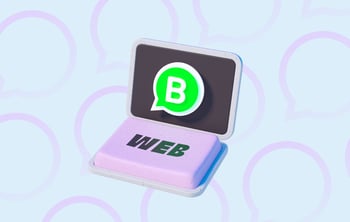Table of Contents
In our recent "Road to €1 million" webinar with SNOCKS, we had so many questions we ran out of time to answer them all. So we've done it for you now. There should be some business takeaways in there for you, even if you missed the webinar.
Our last webinar with SNOCKS raised many valid questions about WhatsApp Business, conversational commerce, the charles platform, costs, analytics, B2B use cases, privacy and much more. Too many to get through on the day, so as promised, we've finished answering questions for you now.
Take a look and see if we've answered yours. If you don't see your question, or have another for us, let me know and I will add it.
WhatsApp for B2B
Can I use WhatsApp for B2B use cases?
Usually we recommend charles for B2C models as you usually need a certain amount of traffic to unlock the full potential of our features. It also depends how you brand the channel. But we’re always happy to explore new opportunities.
Privacy and GDPR
How do you tackle the GDPR topic?
General Data Protection Regulation (GDPR) compliance is something we advise on and support businesses with. Our software was built in Europe where the GDPR is law.
For example, we ask you to ensure “double opt-ins” (ask people twice, a GDPR requirement) before you start sending communications to customers in WhatsApp. Features like contact deletion (GDPR ensures the right to be forgotten) and contact export (if someone requests the data you hold about them), go further to allow you to fulfil GDPR requirements.
We also provide you with ongoing support and best practices to help you use our software in line with GDPR and we employ legal experts to stay on top of changes in data privacy laws in Europe.
Even if clients aren’t based in the EU we strongly encourage them act as if they are. As a company, we respect people’s privacy and want to keep WhatsApp a clean, safe and fun channel for both businesses and consumers.
Finally, you as a business are incentivized to stay GDPR compliant. You not only risk fines, but a lower WhatsApp rating which prevents you from communicating with customers.
Customer acquisition
How can I acquire new customers on WhatsApp?
For existing leads that already have a touchpoint with your business, you can successfully redirect them from another channel, like email, by offering:
- Discounts
- Prize
- WhatsApp exclusives
To turn website visitors into WhatsApp subscribers, there are different methods. These opt-in touchpoints include:
- Popups that could offer a discount or newsletter (these work best when they refer to seasonal campaigns like Black Friday)
- Chat-in popups
- Chat bubbles in the corner that can open a customer service chat
- Automated conversation that offers automated assistance when your chat agents aren't available.
To acquire completely new customers is a little more difficult. Right now, WhatsApp is set up to work better as a retention channel than discovery channel. However, one method we've seen working very well is the "forward to a friend" route, where you offer customers a unique discount code they can forward to their WhatsApp contacts. You could also add QR codes on advertising campaigns or in stores to direct people into chat from physical locations.
In future, WhatsApp will become more of a discovery channel. It's implementing features like a separate section for businesses. Customers can then search for companies by name, industry or location.
Resource
How much work do you have to put in to answering questions coming from users in WhatsApp?
You have more control over this than you may realize. When we set up a WhatsApp channel, we consult with a company to work out how much resource you can or want to put into servicing the channel.
Some clients use WhatsApp mostly for marketing and spend just 1-2 hours sending 2x campaigns a month. The social media manager or marketing manager might also be responsible for WhatsApp chats. Others hire a full-time team of WhatsApp chat agents and encourage customer support questions on their website to build trust and relationships.
There's also the possibility to ramp up resource around the time a campaign goes out, since some people will reply with questions and comments to a marketing campaign.
In general, we assume that companies don’t want to hire heavy resources to service WhatsApp and suggest ways to keep the workload down, like:
- Automation: for common tasks, like opt-ins, FAQs and marketing campaigns, using our Journeys tool. This will keep time answering questions to a minimum – unless of course it makes sense for your business to be there all the time to answer questions.
- Out-of-office: a tool that tells website and WhatsApp visitors your opening hours, and when you’ll be able to reply. You can connect this to a flow offering customers an automated conversation to lead them to what they need. Then during your opening hours you can make sure live agent(s) are there. This helps set customer expectations.
- Focusing more on sales, marketing and community: most clients use WhatsApp more for marketing or sales and so don’t obviously offer it as a support channel, but more of a “club” or place for exclusive discounts and news.
To make it more tangible, our client Barò Cosmetics in Italy has around 20 people servicing its WhatsApp channel. Other companies have just one – often at the beginning this will be the marketing manager or even the founder.
SNOCKS, for example generates around 80% of its revenue with automation, so very little time needs to be spent answering customers. It's largely up to you.
Customer behavior
Do people use it as a support channel or only to get their coupon code?
We find that customers tend to join a WhatsApp channel because of a discount, offer or exclusive benefit but they can become very engaged with the brand after that in terms of support and brand feeling.
For example, watch brand Venezianico uses WhatsApp as a fan club, even getting customers contributing to product development. It finds that WhatsApp is a better place for this than a Facebook group as it's more private and direct.
Again, it depends on your brand. If you have a high value product that requires customization or customer reassurance, you may find that people want to use WhatsApp mostly as a support or conversation channel. For lower value products, discounts may be the best draw for customers.
In general though, even though you may lean towards one side – sales, marketing or support, WhatsApp works best as an all-round channel. To keep people interested and avoid annoying them (and being blocked), you need to send a combination of brand messages and marketing messages, as well as be there to listen and respond when your customers reach out to you.
That's why we made our platform to support sales, marketing and support. The aim is to have all your customer needs fulfilled in one thread so it grows to become the only place they need to come to interact with your business.
Analytics
With Facebook ads, we can analyze data on a dashboard and then take decisions. How does that look here?
We know how vital analytics are to a growing ecommerce business and are very focused on giving our clients in-depth analytics.
What we offer right now is data for messaging KPIs: how many messages, total revenue generated, revenue per recipient and more.
You also get Google Analytics integration. You can create short UTM links for WhatsApp campaigns to help you track customers after they click your message: how many clicks, how many purchases, what revenue generated and so on.
We're adding new analytics all the time. For example, we're working on adding insights into opt-ins – how people join your WhatsApp channel, from where, and what they do next.
Do you track open rates vs. sendouts vs. deliveries?
Yes.
Unsubscribes
How do you manage bounce rate? If a person blocks you, are you blocked for a lifetime?
Unsubscribe rates can be very low on WhatsApp and we actively coach companies on how to avoid being blocked. Our client Pferdegold for example said out of 4,000 subscribers only 13 unsubscribed. Compared to email unsubscribe rates, this is a very good number.
If a person blocks you, they can always choose to opt in again at a later date.
Conversion
How would you compare the conversion rate you see in your WhatsApp campaigns with your email marketing campaigns?
The first step towards conversion is of course for people to actually open your message. On average, around around 81% of people open WhatsApp messages from our customers, compared to 30% in email. Click-through rates are also higher in WhatsApp than email.
Checkout
Can we get a look at the checkout page users get when clicking on one of your sales messages? What works best there? Have you done A/B tests?
The checkout page will be your own online shop checkout page. What charles does is let you create pre-filled carts and send this link on WhatsApp, so when customers get to your checkout page, all they have to do is pay. If they’re logged in, they can purchase in as little as one click.
One high-performing addition to your checkout page here is to offer customers delivery updates through WhatsApp. This gives customers a genuinely useful reason to be in your WhatsApp channel and they're usually very grateful for simple WhatsApp notifications about their package.
The ultimate goal is to keep the entire customer journey in WhatsApp, as is happening in China, India and Brazil where WhatsApp is more established.
Age profile
Do you see an age pattern? E.g. only younger customers use WhatsApp.
No. People of all ages use WhatsApp. Some companies come to us with an older customer base and are concerned that they might not be on WhatsApp. We assure them that they are! There's no such thing as a confused silver surfer anymore. Think of all the grandparents sharing pictures of their grandkids on WhatsApp and memes with friends. It's the best way for them to keep up with friends and family.
In fact some clients find they can engage an older customer base even more easily than a younger one. One client told us that his older audience doesn't like the complexity of online shopping, and uses its WhatsApp channel to guide them through it.
Message limitations
Why do you only start with 1,000 messages?
Part of keeping the high quality of WhatsApp as a platform is that businesses need to need to grow its WhatsApp channel organically and earn the right to message more people. This means adhering to criteria like maintaining a medium/high quality rating and proving that you can message this number of people consistently.
This limit starts at 1k messages, then goes to 10k, then 100k, then unlimited. For companies doing the right thing, it doesn't take long to raise this limit. You can see more about how to increase your WhatsApp messaging limits here.
To learn more about how WhatsApp works for businesses, and what charles adds on top, watch the full SNOCKS x charles webinar here or get in touch.



